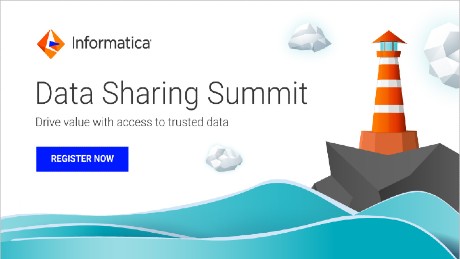Data Sharing and the Ability to Make Data-Driven Decisions: A Perspective on Informatica’s Newest Virtual Summit
Last Published: Mar 18, 2025 |
In the five years since Informatica first acquired Diaku and introduced Axon Data Governance, we’ve worked with customers in nearly every industry. We’ve seen how they have evolved the kind of collaborative data governance programs that bring business leaders and IT together. Through these central data governance communities, data governance leaders have been able to establish a governance framework, operationalize their program, and deliver business value. As those same leaders look to federalize their programs and fuel their business with trusted data, they have begun to develop what we call data sharing programs. And while data sharing may be known by different names—what you call it depends on the business, industry, or where in the world your organization is located—it’s already clear that data sharing programs are delivering untold value.
What is Data Sharing?
In the most basic sense, a data sharing program connects people and data together to facilitate data-driven decision making. Data sharing programs make it possible for organizations to democratize trusted data and enable internal data consumers to collaborate around data, thus making it central to their culture. And a data sharing program not only ensures more informed decision making—it also acts like a spiderweb across the organization, creating an engaged community of data consumers sharing their repositories of trusted data back and forth.
2.2.22
On February 2, 2022, Informatica will host its first-ever Data Sharing Summit. During this virtual experience, viewers will hear from industry experts, such as Stewart Bond from IDC, and Informatica leaders such as David Corrigan, GM of Data Governance, Catalog, Quality, & Privacy. They will also hear about the four cornerstones of a successful data sharing program and hear from customers just how data sharing programs enable data consumers at all levels to find, understand, trust, and access data that they can then use to make informed decisions and propel their organizations forward.
Cornerstone 1: Find
Today’s data sharing programs enable internal data consumers of all technical abilities the opportunity to find data that they need to run their part of the organization. For example, if someone in sales operations needs end-of-quarter data mashed up with past-quarter sales data and marketing event attendance information, they can search for data sets that data owners and other consumers have identified as trusted sources of information. And not only can they discover the data that they need, they also can find AI models that will help them automate predictive analytics—say, for a “next best offer” campaign. With today’s data sharing programs, organizations can find data and models that not only live in a single data lake or data warehouse, but across any location—on premises or in the cloud. Since data can live anywhere in 2022, the key thing to remember is that data consumers should have the ability to find it, regardless of source, without needing to know where it’s stored. (After all, if they knew where to find the data they needed in the first place, the organization wouldn’t have needed a data sharing program.)
Cornerstone 2: Understand
Just as important as the ability to find data is the ability for data consumers to understand what they’ve found. Data governance programs have been amazing at providing this ability, providing the context around data meaning, from business glossary terms to data lineage. Data sharing programs make this connected data understanding even more accessible as data consumers need to be able to instantly see what they’ve found, understand who created it, who owns it, who else has used it, and be able to know that it’s the right data to get the job done. For many business users, this component needs to be a seamless and easy experience so that they can quickly identify if this is the right information for them to use when trying to make the best decision.
Cornerstone 3: Trust
When dealing with a data sharing program, data consumers must be able to trust the data if they’re going to trust the decisions made from that data. When an executive asks for a report, the business leader needs to be able to provide that report by the deadline and stand by it, confident that this information is the correct and that their team’s analysis and decisions about the data are reliable. Trust extends to the quality of the data, the source of the data, and the compliance surrounding the data. Data consumers need to know that the data is not only accurate but that it’s safe for them to access. With proper governance context, data consumers can get the right data at the exact moment they need it.
Cornerstone 4: Access
A data sharing program must give data consumers the ability to find, understand, and trust data, but it’s equally important that data consumers are able to actually get their hands on the data. With automation, data consumers can quickly request access, identify where they need the data delivered, and actually have it sent where requested. At Informatica, we have always said that the organizations that can intelligently bring data and people together will be successful. That’s why modern data sharing programs have become so important and essential. Unfortunately, access is still an area that most CDOs struggle with building: according to recent research from IDC, less than 40% of CDOs have been able to standardize data sharing across their organization.
Data Sharing Summit
If you’re interested in learning how you can deliver these four cornerstones (find, understand, trust, and access) of a successful data sharing program to your organization, please plan to join us to learn more. Register now in your region: North America | Europe, Middle East & Africa | Asia Pacific & Japan









